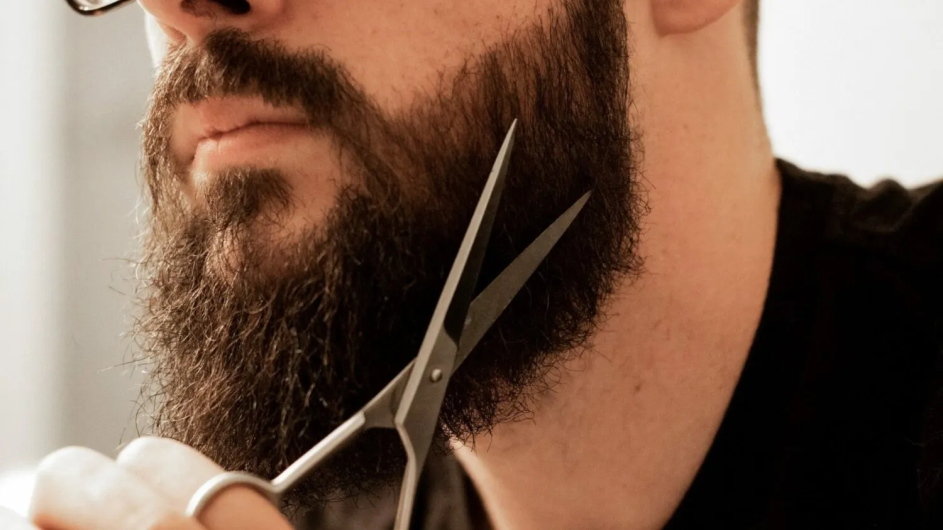Table of Contents
ToggleFacial Hair Scissors Designed To Trim Beards And Mustaches
Facial hair scissors, tailored for grooming your facial hairs, provide sharpness, comfort, and exceptional quality. Say goodbye to those stubborn stray hairs that disrupt your facial hair’s neatness, creating an untidy look.
Types of Facial Hair Scissors
There are numerous accessories available on the market, including:
- Pointed scissors for precise, stubborn hair trimming.
- Round-tipped scissors, ensuring safe, close cuts to the skin.
- Tapering scissors, perfect for thinning and adding volume to your beard.
Guide to facial Trimming With Facial Hair Scissors

This tutorial is suitable for all facial hair types, whether long or short, straight or curly, thin or thick.
-
Wash and Thoroughly Dry Your Beard
Initiate by cleansing your beard with a hair-appropriate shampoo. Subsequently, ensure your beard is completely dry, as trimming it while wet can result in shorter than intended cuts due to water-weighted hair.
-
Comb Your Beard Down and Up
Begin by combing your beard downward, following its natural growth pattern. This will reveal your starting shape. Then comb your beard upwards and outwards, especially if it’s curly. This step untangles and highlights stray hairs, allowing for even trimming.
-
Start with One Side, Then the Other
Select one side to begin with, employing a comb or beard stencil as a size guide. Run the comb through the beard at an angle and trim the hairs protruding from it. Initially, trim only the tips and emulate a barber’s light, quick cutting style. Ensure consistent hair length comes out of the comb teeth with each cut. Repeat the process on the opposite side.
-
Address the Neck Area
For a seamless transition, use an electric beard trimmer to blend the beard to the neck, reserving the scissors for precision.
The neck area must be carefully defined:
- If it is too high, your beard will look more like a chinstrap
- If it is too low, it may look sloppy and unkempt.
-
Check for Symmetry
Afterward, comb your beard and check for stray hairs, unevenness, or gaps.
-
Rinse and Moisturize
Rinse your beard to eliminate trimmed hairs. If available, use a hair dryer to remove any remaining hairs. Follow up by moisturizing and nourishing your beard and skin. Beard oil, incorporating ingredients like argan oil, castor oil, aloe vera, and sweet almond oil, is an excellent choice for post-trim care. This not only keeps your beard healthy but also prevents skin irritation, especially during the early stages of beard growth.
Best Facial Hair Scissors
- Japanese thinning and cutting scissor
- Left handed facial hair scissors
Related: How are Left Handed Hair Cutting Scissors Different?
FAQ:
-
What are Facial Hair Scissors used for?
Facial hair scissors are designed for precise trimming and grooming of facial hair, including beards and mustaches.
-
Can I use regular scissors for facial hair trimming?
While it’s best to use dedicated facial hair scissors for precision, regular scissors can work in a pinch. However, they may not provide the same level of control and sharpness.
-
What are the different types of Facial Hair Scissors?
There are three main types:
- Pointed scissors for precise trimming.
- Round-tipped scissors for safe, close cuts.
- Tapering scissors for thinning and adding volume.
-
How should I prepare for facial hair trimming?
Start with a clean, dry beard. Wet hair can lead to inaccurate trimming as it appears longer when wet.
-
Can I use a comb during the trimming process?
Yes, comb your facial hair both downward and upward to highlight stray hairs and ensure even trimming.
-
What’s the best technique for trimming facial hair?
Begin on one side, using a comb or beard stencil as a guide. Trim the hairs protruding from the comb at an angle, starting with light, quick cuts. Repeat on the other side for balance.
-
How do I define the neck area properly?
Use your Adam’s apple as a reference point and trim all hair below it. Be mindful of the neck’s height to avoid a chinstrap or unkempt appearance.